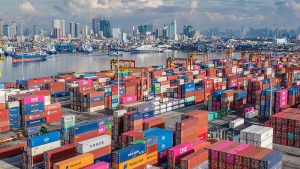THE PHILIPPINES’ current account deficit is seen narrowing further this year amid a more positive global outlook, Fitch Solutions’ unit BMI said.
In a report dated June 25, BMI lowered its current account deficit forecast to 2.3% of gross domestic product (GDP) from 2.8% previously.
This is narrower than last year’s current account deficit which stood at 2.6% of GDP, but wider than the average of -0.4% from 2015-2019.
The BSP projects a $4.7-billion current account deficit for 2024, equivalent to 1% of GDP.
“A more optimistic global outlook was the main reason behind this revision. We initially anticipated a more significant downturn in worldwide demand,” BMI said.
“However, the global economy has proven to be much more resilient, prompting us to pencil in a stronger (global) expansion of 2.4% in 2024 after initially projecting global GDP growth of 2.1% at the start of the year,” it added.
The latest data from the BSP showed that the current account deficit stood at $1.7 billion in the first quarter, equivalent to -1.6% of GDP. This was lower than the $4.4-billion gap or -4.3% of GDP seen in the same period a year ago.
“Risks to our current account outlook lean towards a larger shortfall. Much hinges on trends in the global economy,” it said.
BMI said that it sees external demand weakening in the second half of the year, due to an expected economic slowdown in China, the United States, Japan, Hong Kong and Singapore.
“While external demand has held up relatively well in the first half of the year, we think that it will slow in earnest in the latter half as major trading partners face domestic economic headwinds of their own,” it said.
BMI said the tourism sector’s recovery may “not be as strong as the numbers suggest” and may be the “result of an anomaly.”
“International visitors are still 40% lower than prior to the pandemic even though revenues have already exceeded pre-pandemic levels. We have determined that this increase is due to a temporary change in spending patterns, driven by a backlog of travel demand after the pandemic,” it said.
The uptick in tourism revenues is expected to taper off soon, with some signs of a slowdown already emerging.
“Average expenditure to date this year is roughly 5% less than in 2023, once inflation adjustments are made,” BMI said.
Foreign investments are also seen to remain muted this year, a trend seen in other countries in the region.
“While we are of the belief that extensive reforms implemented in recent years will indeed pay dividends, the prevailing environment of high interest rates will keep a lid on investment activity for now,” BMI said.
BMI data showed FDI as a share of GDP averaged 1.9% in the last four quarters, lower than the previous decade’s average of 2.2%.
The Bangko Sentral ng Pilipinas (BSP) has kept the key rate at a 17-year high of 6.5% since October 2023.
In a separate report, BMI said that it expects the central bank to keep rates steady at its meeting on Thursday.
This is in line with a BusinessWorld poll conducted last week where all 15 analysts surveyed expect the Monetary Board to stand pat for a sixth straight meeting.
“Given that the economy has remained fairly resilient thus far, the Bank will be in no hurry to cut rates until price pressures have eased more convincingly,” BMI said.
BMI said it is keeping its positive outlook for consumer spending in the Philippines despite elevated interest rates.
“Easing inflation and a tight labor market will support spending, as real wage growth returns to positive territory, which will support purchasing power over the year,” it added.
The BSP expects inflation to temporarily accelerate to above the 2-4% target until July but settle within target after. — Luisa Maria Jacinta C. Jocson
